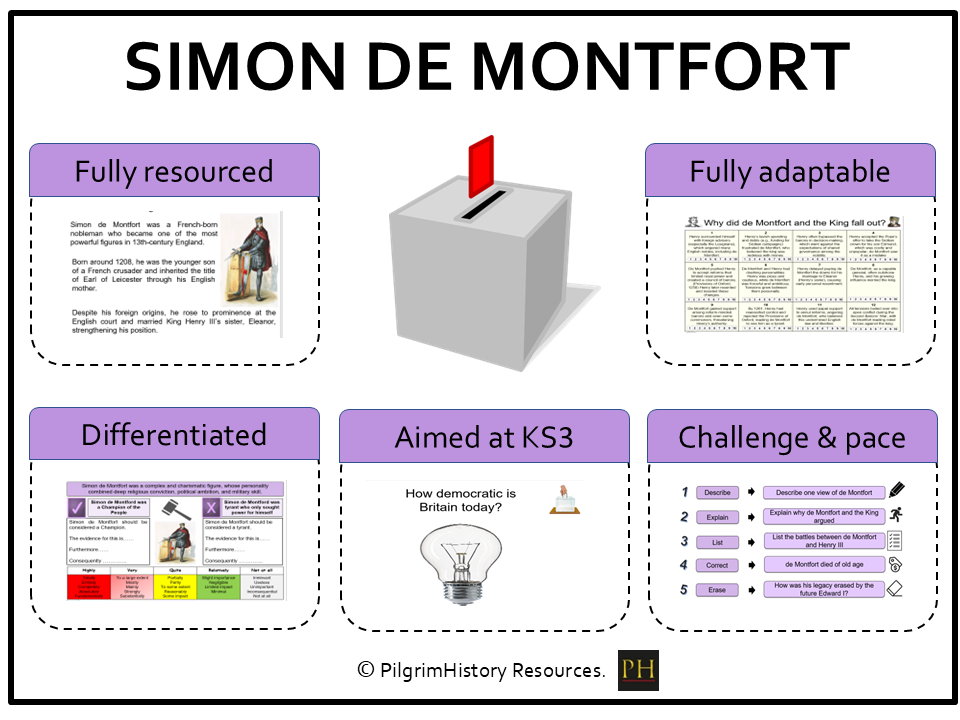


Uncover the birth of English parliamentary system with this fully resourced, ready-to-teach lesson on Simon de Montfort, perfect for KS3 or as a foundation for GCSE students exploring the development of democracy in Britain.
This lesson (delivered over 2 x 1 hour sessions) dives into one of the most dramatic chapters in medieval English history, exploring the life, legacy and controversial reputation of Simon de Montfort.
Background and Ambition: Students investigate who Simon de Montfort was, from French nobleman to English earl and how his personal ambitions and principles brought him into direct conflict with King Henry III.
The Provisions of Oxford (1258): Pupils explore why the barons demanded reform, what the Provisions set out to achieve and how they changed the balance of power between the King and his nobles.
Civil War and Climax: Bring the battles to life with accounts of the Battle of Lewes and Battle of Evesham, helping students understand the high stakes, strategies and outcomes of Montfort’s rebellion.
De Montfort’s Parliament (1265): Was this the birth of democracy or a baronial power grab? Students examine the evidence and significance of the first Parliament to include representatives of the commons.
Hero or villain? Through debate and structured extended writing tasks (with scaffolding included), learners critically assess if de Montfort was a champion of the people.
This lesson includes
An engaging PowerPoint with step-by-step guidance
Source analysis tasks using modern and contemporary accounts
A timeline to build chronological understanding
Retrieval quizzes and plenary tasks to consolidate learning
Differentiated worksheets to support all learners
Why teachers will love this resource
Fully planned and resourced. Just print or upload and teach
Builds core KS3 skills such as causation, interpretation and source analysis
Prepares students for GCSE themes like power, monarchy, and Parliament
Encourages critical thinking and balanced historical judgement
Whether you’re teaching medieval monarchs or sowing the seeds of parliamentary power, this lesson helps students make meaningful connections between past and present.
Something went wrong, please try again later.
This resource hasn't been reviewed yet
To ensure quality for our reviews, only customers who have purchased this resource can review it
to let us know if it violates our terms and conditions.
Our customer service team will review your report and will be in touch.